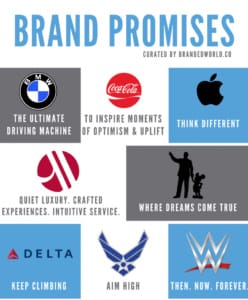“If knowledge is power, knowing what we don’t know is wisdom.”
Adam Grant
In our first year of operation, the company I founded earned a profit of $80,000. That was in Singapore in 2001.
We had done well with two Customer Service workshops I’d written and we’d landed two global Mystery Shopper research programs which were well underway.
Business was off to a great start.
But I knew that what had made us successful so far wasn’t going to necessarily make us successful in the mid to long term.
I hadn’t left working in the corporate world just to find myself having to go back in to that because I hadn’t helped my Clients solve their problems.
So I took $40,000 of that first year profit, signed a contract with a consulting firm in California and flew myself and a Singaporean colleague to live in the isolated mountaintop home of the firm’s founder.
For a month.
Why did we spend a month on a mountain top in California?

It’s a reasonable question.
My colleague and I travelled to the U.S. to receive four weeks of private instruction in Contact Center management directly from the consulting firm’s founder.
I had done my homework before signing on the dotted line and everything went the way it was supposed to go.
It was a superb and intellectually intense month.
Every morning we were up and seated in our Instructor’s home office to start class at 9:00AM.
Our 12:30 – 1:30 lunch consisted of sandwiches that he made for us in his big kitchen downstairs (which my Singaporean colleague despaired of at one point saying, “Argh, in Asia we prefer to eat warm food!”).

To highlight how isolated we were, the Instructor had his own small plane and airstrip and he flew himself to most of his engagements.
Aside from two or three trips into town, we lived as if we were in boarding school. And I loved almost every minute.
Over the four weeks we covered four different domains of Contact Center knowledge in great depth:
- Operations Management
- Leadership & Business Management
- People Management
- Customer Relationship Management (for CX folks remember it was 2002)
The deep grounding in know-how that I gained in that month has informed my view of the Customer ecosystem ever since.
Which I can summarize as this belief –
I believe that leading & managing in the Customer ecosystem, whether Contact Center Management or Customer Experience Management, is a business discipline.
As with any business discipline, there is an essential level of know-how, across multiple domains, that an industry professional needs in order to avoid negative outcomes and achieve great outcomes.
In the Customer industry, as was true in my own case, people don’t typically go to school to learn these things.
Many people in Customer Service & Customer Experience end up in the industry by accident and then end up learning on the job, which as you’d expect can be very hit or miss.
I know this because I’ve met thousands of these folks in our workshops and have had the privileged opportunity to listen to their stories.
And it’s my own story too.
By Year 6, I had signed checks totallying nearly$380,000
By the sixth year of my company’s operations, I had signed checks totalling nearly $380,000 to cover costs including IP & content rights, long distance travel expenses to join workshops and meetings and to pay for various membership & certifications for myself and our Team Members.
And it was worth every penny.
Clients were flying me all over the world to teach their people how to succeed in the Customer ecosystem.

I remember one week where I finished a class in Beijing in the evening, went to the airport to board a flight, landed in Delhi in the early morning hours and took a taxi straight to the venue to begin a class there.
And I continued to write training content of our own.
Which our Business Partners and Clients began to buy or license from us and which created another stream of business for the company.
I’m grateful I came up through Finance

I came up through Finance before entering the Customer domain. So the concept of a business discipline was second nature for me.
To get hired for the kinds of senior level Finance jobs I held required a relevant university degree and industry certifications.
Of course you learn on the job.
But I never heard any VP, Finance say that their bosses were fine that they learn how to prepare accurate financial statements ‘on the job’.
It’s both. Formal knowledge + experience.
Where you apply your knowledge based on the context and culture where you work.
 In my last Finance role, I worked at a direct marketing company that sold music, children’s toys and gardening tools via TV commercials and catalogs.
In my last Finance role, I worked at a direct marketing company that sold music, children’s toys and gardening tools via TV commercials and catalogs.
We served our Customers through our own Contact Center & Distribution Center based in El Segundo, California.
I’d been preparing the financials and budgets for both the Contact & Distribution Centers for a few years and knew the numbers inside and out.
Then a remarkable thing happened that changed my life
One day the current VP, Operations had resigned from her post to take another job. An hour later the CEO called me up and offered me her position.
To move from VP, Finance to VP, Contact Centre & Distribution Operations.
I was honored and excited and said yes right away.
Looking back, I think my finance background was one of the key reasons the senior team extended the offer to me.
The fact that I knew the numbers and was able to explain them had earned me face time and trust with very senior people.
I was also fortunate that the outgoing VP, Operations had been so generous with her time, often explaining the art & science of Contact Center Management as we’d have lunch or take long walks around the grounds.
Of course over the next eight years of senior Contact Center positions in the U.S. and Asia I learned a lot on the job.
Experience matters and helped me grow.
But I absolutely knew that I wasn’t a master of the domain. That I didn’t know what I didn’t know.
And I was the VP, Operations with nearly a decade of solid work experience!
I filled the gaps as best I could but anyone who has worked in Operations will tell you that taking time off to learn is tough. You’re often on call 24 x 7.
So when I left the corporate world and started my own company, I was committed to closing the gaps in my knowledge as soon as I could.
I mean how could I credibly help Clients solve their problems and become their preferred provider if I didn’t have the know-how to do so?
And that’s how I ended up on a mountain top in California.
You’ve got to know what you’re doing
One of the most common comments we get from Participants in our workshops is this: “I wish I had taken this course earlier. If only I had known this stuff earlier. Now that I can see the full picture it all makes sense.”
To which I reply with Maya Angelou’s wonderful quote, “Do the best you can until you know better. Then when you know better, do better.”
 And no, you don’t have to do what I did. You don’t have to start your own company and spend $380,000.
And no, you don’t have to do what I did. You don’t have to start your own company and spend $380,000.
I know what I did is pretty unique.
But the lesson for me has paid off.
In an industry that requires business discipline level know-how, and one where people generally don’t go to school for this stuff, it’s never a bad idea to look in the mirror and say, ” I don’t know what I don’t know.”
And then doing something about it.
Thank you for reading!
 If you’d like to stay up to date on our articles and other information just send me your email or add your details to the contact form on our website.
If you’d like to stay up to date on our articles and other information just send me your email or add your details to the contact form on our website.
Daniel Ord
www.omnitouchinternational.com
Daniel Ord teaches the Customer Experience Team at Agoda in Shanghai.
Cover photo by Lesly Juarez on Unsplash





 Not the organizational vision though of course the CX Vision must map to the organizational vision.
Not the organizational vision though of course the CX Vision must map to the organizational vision. Equipped with my CX Vision (point #2) and my readiness analysis (point #3), I can now set out the short, mid & long term activities needed to move forward.
Equipped with my CX Vision (point #2) and my readiness analysis (point #3), I can now set out the short, mid & long term activities needed to move forward. I saw a CX Consultant once say, “It’s not about the money…”. And I remember thinking what terrible advice that was.
I saw a CX Consultant once say, “It’s not about the money…”. And I remember thinking what terrible advice that was. Metrics inform me of my progress – and keep our CX efforts headed in the right direction,
Metrics inform me of my progress – and keep our CX efforts headed in the right direction, These days I can visit the dentist, buy new eyeglasses and make a dinner reservation in German. I’m not where I want to be with my vision yet – but I’m closer than I was when I started.
These days I can visit the dentist, buy new eyeglasses and make a dinner reservation in German. I’m not where I want to be with my vision yet – but I’m closer than I was when I started. I appreciate the time you took to read this. And if you’d like to follow along with our articles and other information just leave your email address in our contact form!
I appreciate the time you took to read this. And if you’d like to follow along with our articles and other information just leave your email address in our contact form!




 But, over time and with your influence, a great Service Vision can readily evolve into an organizational CX Vision.
But, over time and with your influence, a great Service Vision can readily evolve into an organizational CX Vision.


 But one potential barrier I’ve seen often is this one.
But one potential barrier I’ve seen often is this one.









 Daniel
Daniel






 We’d fulfill everything from compact discs through to gardening tools and children’s toys.
We’d fulfill everything from compact discs through to gardening tools and children’s toys. We’d package and ship off things like posters, standees (those life sized cut-outs and backdrops) and even one of a kind promotional items for VIP receptions and giveaways.
We’d package and ship off things like posters, standees (those life sized cut-outs and backdrops) and even one of a kind promotional items for VIP receptions and giveaways. No fan ever wanted to receive an autographed Tom Cruise photo with a big oily smudge on it.
No fan ever wanted to receive an autographed Tom Cruise photo with a big oily smudge on it. We would always package the first kits ourselves so that we could try out what worked (or didn’t).
We would always package the first kits ourselves so that we could try out what worked (or didn’t). Then back to the phone.
Then back to the phone.

 Because it sounds an awful lot like you’re looking to strike a deal and its your happiness that you’re putting up as table stakes.
Because it sounds an awful lot like you’re looking to strike a deal and its your happiness that you’re putting up as table stakes.
 If in the old days, a Manager came into my office and said they had a staff with an attitude problem, I’d ask them to tell me specifically which attitude was the problem.
If in the old days, a Manager came into my office and said they had a staff with an attitude problem, I’d ask them to tell me specifically which attitude was the problem.
 As an example, on a scale of 1 to 6 (with 6 being highest), my attitude criteria for hiring might be:
As an example, on a scale of 1 to 6 (with 6 being highest), my attitude criteria for hiring might be: It could be that they –
It could be that they –



